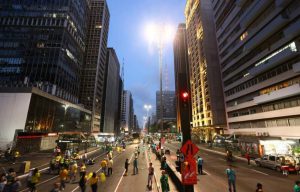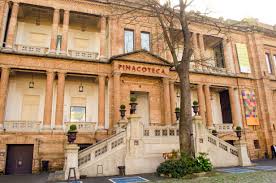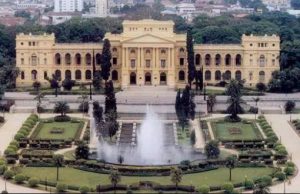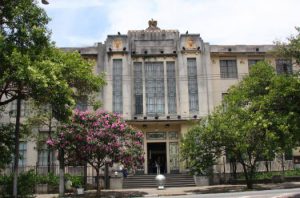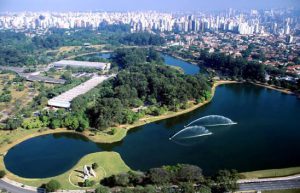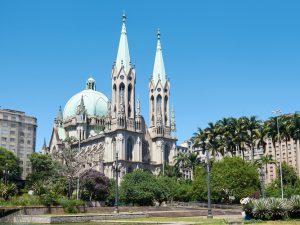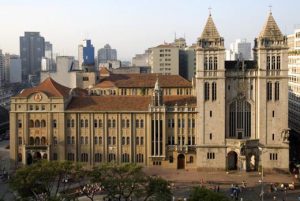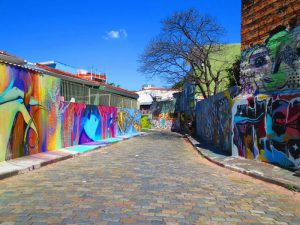
TOURISM
São Paulo is a multi-faceted metropolis that stays awake 24 hours a day. Besides being the most important economic center of Brazil, it is filled with culture, with many offers of knowledge and entertainment. The city has more than 100 museums, 280 cinemas, 182 theaters of various artistic lines, 146 libraries, about 40 cultural centers and several popular festivals and fairs that take place on open streets.
Below we list some interesting and important points of our history of São Paulo.
This is the main avenue of São Paulo, about 3 km long. It is the city business heart, but it also offers a huge variety of attractions. Paulista Avenue, inaugurated at the end of the 19th century, was once the home of great mansions of coffee barons. Today, little is left of that time and the streets are dominated by business skyscrapers, cultural spaces, shopping centers, parks and many bars and restaurants. No matter what time you try to walk it, the avenue will never be empty. Do not forget to visit SESC Paulista’s observatory (Brigadeiro subway station, green line) and MASP (Trianon-Masp subway station, green line). On Sundays, Paulista Avenue is closed to cars and becomes a place with several handicraft fairs and musical attractions.
MASP (Museum of Art of São Paulo)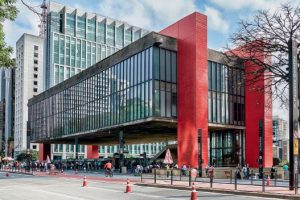
MASP is one of the most important Brazilian cultural institutions. Founded in 1947, it has a important collection of Western art in Latin America, in which the consistent sets concerning the Italian and French schools are especially notable. It also has an extensive section of Brazilian art and small sets of African and Asian art, decorative arts and archaeological pieces. The museum houses one of the largest art libraries in the country. MASP has a span of more than 70 meters that stretches under four enormous pillars, a place that has become an important space for artistic and political manifestation in the city. Located on Paulista Avenue, MASP is open to the public from Tuesday to Sunday.
The Pinacoteca of the State of São Paulo is one of the most important art museums in Brazil. It occupies a building built in 1900, in Luz Garden, downtown São Paulo (subway station Luz, yellow and blue lines). The Pinacoteca houses one of the largest and most representative collections of Brazilian art from the 19th and 20th centuries, including paintings, sculptures, drawings, engravings, photographs, among others.
In 2003, the Pinacoteca also managed the building where the DOPS (Department of Order and Social Policy) functioned during the period of the military dictatorship in Brazil (1964-1985). Currently restored, the building was renamed as “Pinacoteca Station” and houses the Memorial of the Resistance. Located just a few streets from the Pinacoteca, the Memorial tells the story of the Brazilian military dictatorship and presents visitors with the main points of military action and repression in São Paulo city.
http://memorialdaresistenciasp.org.br/memorial/
The Paulista Museum, also known as the Ipiranga Museum, belongs to the University of São Paulo and is located in the Ipiranga neighborhood, a traditional neighborhood in the São Paulo city, where the proclamation of Independence of Brazil took place. The Museu Paulista is the oldest public museum in the city, inaugurated in 1895, and an important symbol of the Independence of Brazil. It has a large collection of objects, furniture and works of art with historical relevance.
Currently, the Museum is closed for visitation, as the building is undergoing restoration works to be reopened to the public in 2022, the year of the bicentenary of Brazil’s independence.
Meanwhile, the Museum is located in Independence Park which also houses the Monument to Independence of Brazil, on the banks of the Riacho do Ipiranga, in the historical place where D. Pedro I would have proclaimed the independence of Brazil on September 7, 1822. The Monument is also the burial crypt of Dom Pedro I and his two wives, Empress Leopoldina and D. Amelia.
http://www.mp.usp.br/museu-do-ipiranga
The Museum of Zoology belongs to the University of São Paulo and is located next to the Paulista Museum. Inaugurated in 1895, its headquarters is a historic building constructed with the purpose of being a natural history museum with stained glass and plaster decorations, exhibiting zoological themes. Its exhibition houses a series of stuffed animals (including prehistoric fauna), fossils, replicas of fossils and diverse information on the Brazilian biodiversity. Besides the visitation space, the museum also houses scientific collections of several zoological groups, being an important research space. The internal organization at the Museum of Zoology features a new scenography and more diversity of animals in its gallery, as well as a recent laboratory open to the public, so that people can interact with a simulation behind the scenes of the museum.
Located in the Vila Mariana neighborhood, Ibirapuera Park is the largest urban park in São Paulo. In the park there are various attractions for the public, such as cultural and educational tours (eg, guided walks and birdwatching activities), art sculptures, historical monuments, planetariums and art exhibitions (such as those in the park’s Hollow). With a landscape full of flowers and trees, there are also exercise equipment, courts, playground, kiosks and bike path. For its green, sporting and cultural wealth, it was voted one of the best parks in the world. Visit the site to find out what cultural event is taking place in the park.
http://www.parquedoibirapuera.com/
THE MUNICIPAL THEATER OF SAO PAULO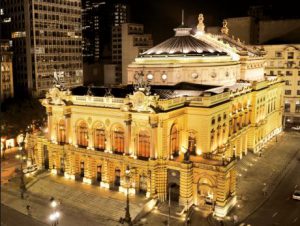
The Municipal Theater of São Paulo is one of the most important theaters in Brazil and one of the postcards of the city of São Paulo. Located in downtown, in Praça Ramos de Azevedo (subway station Anhangabaú, blue line), was inaugurated in 1911 to meet the desire of the São Paulo elite of the time, who wanted the city to match the great European cultural centers . His architectural style was inspired by the Paris Opera. In addition to its architectural importance, the theater also has historical notability, as it was the stage of the Modern Art Week, the initial milestone of Modernism in Brazil in 1922. It is considered one of the most respected venues in Brazil and presents one of the biggest and best lyrical productions of the country, and important artists and dance companies have stepped on their stage.
http://theatromunicipal.org.br/
The Sé Cathedral is located in Praça da Sé, São Paulo´s downtown (subway station Sé, red line.) In neo-gothic architectural style, it was built at the beginning of the 20th century and is the largest church in São Paulo, with 111 meters in length, 46 meters wide, two towers with a height of 92 meters and a huge dome. It has a capacity of 8,000 people and has the largest pipe organ in Latin America. São Paulo and several important personages of the history of Brazil.
https://www.catedraldase.org.br/
The São Bento´s Monastery is a historical, religious and with an unequaled architecture, with more than 400 years of history. It is located in Largo de São Bento, in the city center (subway station São Bento, blue line). The monastery is open to visitors every day and has a bakery which offers to the public cakes, breads, jellies, biscuits, whose recipes are secular and kept in the abbey archive.
The Beco do Batman is a traditional address of graffiti (street art) and is hidden between the alleys of Vila Madalena, bohemian neighborhood of São Paulo. Legend has it that in the 80’s a Batman sketch appeared from night to day on one of the walls of the alley, which gave its name to the place. Where formerly it was an abandoned place, it went through an immense transformation with the presence of the artists and the walls full of art and, at the moment, is a tourist attraction. The walls of Beco do Batman are an incredible open-air mural with several colorful street arts.
Rua Gonçalo Afonso, Vila Madalena
Copyright © 2025 PAMinSA VIII | Produzido por SCS - Mídias Online



